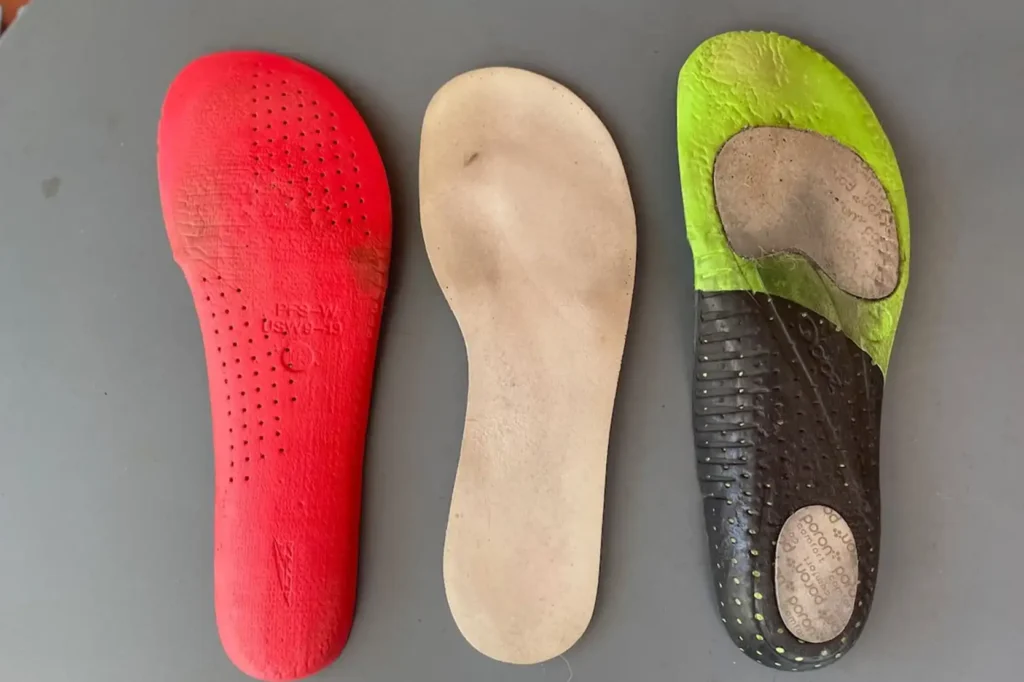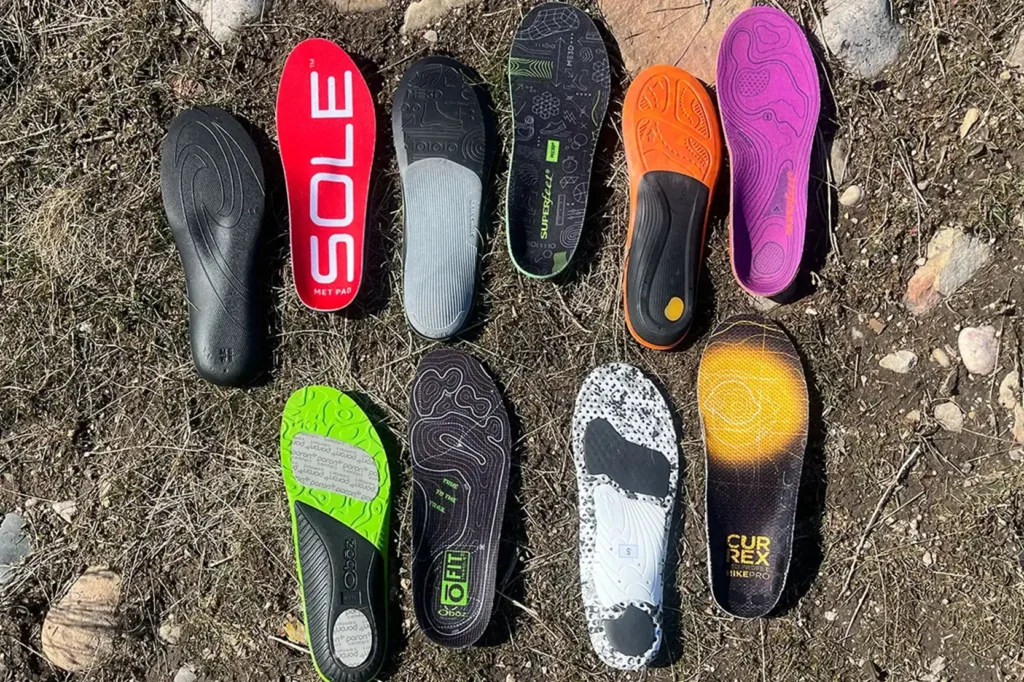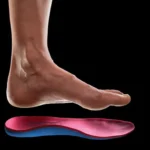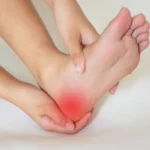Understand materials, shoe pairing, and whether you need custom vs. over-the-counter inserts. Get real, experience-backed insights to walk more comfortably and prevent foot pain.
What Shoe Insoles Do I Need:
Finding the right shoe insoles can be confusing if you don’t know exactly what to look for. With so many options like gel, memory foam, orthotics, and sport-specific inserts, it’s easy to feel overwhelmed. But the truth is, the best insoles for you depend on your foot shape, walking gait, activity level, and any foot problems you may be experiencing. Whether you’re dealing with heel pain, flat feet, or just want more comfort in your shoes, getting the correct insole can make a huge difference.
As someone who has tested dozens of insoles over the years for running, standing all day, and dealing with plantar fasciitis I can confidently say that the wrong insole can make your foot pain worse, while the right one can change your entire experience. In this guide, we’ll break down the exact types of insoles based on needs, support levels, and foot anatomy. Let’s figure out what shoe insoles YOU actually need.
Match these to insole features like arch support, heel cushioning, or material type.
Understand Your Foot Type First:
Before choosing any insole, you need to know your foot arch type low (flat feet), medium (neutral), or high arches. This is the foundation of everything. You can do a simple “wet test” at home just wet your feet and step on a piece of paper. The footprint will help you determine your arch type. Once you know your arch, it becomes much easier to narrow down your insole options.
- Flat feet require structured arch support to prevent overpronation, which often leads to ankle and knee pain. Insoles for flat feet usually have firm medial arch support and a deep heel cup.
- Neutral arches can benefit from moderate cushioning and support, especially if you stand or walk a lot during the day.
- High arches lack natural shock absorption, so people with this foot type need cushioned insoles that provide arch lift and absorb impact.

Match Insoles to Your Daily Activity:
Different activities demand different types of support and cushioning. Matching your insole to your activity can greatly reduce fatigue, prevent long-term foot pain, and enhance overall comfort.
- Standing all day (nurses, retail, warehouse workers): Look for insoles with shock absorption in the heel and ball of the foot, plus solid arch support.
- Running or walking: You’ll need lightweight, breathable insoles with targeted cushioning and support to align your gait and prevent injuries.
- Hiking or heavy-duty work boots: Go for durable insoles that provide extra cushioning, arch support, and heel stability for rugged terrain or long hours.
Do You Have Foot Conditions:
If you’re asking what shoe insoles do I need, the answer may lie in any foot condition you’re experiencing. Specialized insoles called orthotics are designed for specific issues. These insoles are available over the counter (OTC) or as custom orthotics prescribed by a podiatrist. If you have chronic foot pain, it’s worth speaking to a foot specialist.
- Plantar fasciitis: Look for firm arch support and deep heel cups to reduce strain on the plantar fascia ligament.
- Heel spurs: Choose cushioned heel pads with built-in support to offload pressure.
- Metatarsalgia or ball-of-foot pain: Metatarsal pads or insoles with forefoot cushioning can help.
- Supination or overpronation: Stabilizing insoles help correct foot alignment and reduce stress on the joints.
Consider the Type of Shoe You’ll Wear:
Not every insole fits every shoe. Here’s how to pair them correctly. Always check if the insoles are trim-to-fit or come in your exact shoe size. Insoles should sit flat without curling or bunching up inside the shoe.
- Casual sneakers: Medium-profile insoles with good cushioning and arch support are ideal.
- Dress shoes: Look for thin, low-profile insoles that don’t cramp your toes but still offer some arch support.
- Running shoes: Go for full-length insoles with breathable materials and proper heel-to-toe support.
- Boots: Thicker insoles with shock-absorbing heels work best in work or hiking boots.
Insole Material Matters More Than You Think:
The material used in your insole can affect durability, comfort, and how your foot feels over long hours. Choose a material that complements your foot’s needs and your daily lifestyle. Durability and breathability also matter, especially if you sweat or wear shoes for long hours.
- Gel insoles offer excellent shock absorption and are great for short-term comfort but may lack support.
- Memory foam insoles mold to your foot and feel plush but don’t hold structure for long-term use.
- EVA foam (lightweight and responsive) is commonly used in athletic insoles and provides balanced cushioning and support.
- Cork or carbon fiber are often found in high-end orthotics for firm support and longevity.
Custom Orthotics vs. Over-the-Counter Insoles:
Not sure whether to go custom or off-the-shelf? Here’s how to decide. If you’re just looking for more comfort or slight pain relief, OTC insoles from trusted brands like Superfeet, Dr. Scholl’s, or Powerstep can do the job. But if you’ve tried several insoles without relief, it’s time to consider a custom solution.
- Over-the-counter (OTC) insoles are affordable, widely available, and often work well for mild discomfort, arch support, or shock absorption.
- Custom orthotics, prescribed by a podiatrist, are molded to your exact foot shape and condition. They’re more expensive but highly effective for chronic or medical foot issues.
How to Tell If Your Insole Is Working:
Here’s how you know you’ve picked the right insole. Always give new insoles about a week to “break in.” Your feet need time to adjust, especially if the arch support is more structured than you’re used to.
- You feel immediate comfort or relief from pain when standing or walking.
- Your posture improves and you feel more balanced.
- You don’t experience new pressure points or rubbing.
- Your old foot issues (like heel pain or fatigue) begin to reduce over time.
FAQ
Most frequent questions and answers
Check your arch type, foot condition, and activity level. Match these to insole features like arch support, heel cushioning, or material type.
Custom orthotics are better for chronic pain or medical issues. Store-bought insoles work well for general support, comfort, or occasional foot fatigue.
Yes, the wrong insole can worsen foot pain or create new issues by misaligning your foot posture or lacking proper support for your arch type.
Conclusion:
Choosing the right insole doesn’t have to be overwhelming. If you’ve ever asked yourself, “what shoe insoles do I need?”, the answer lies in understanding your foot type, daily activities, and any specific pain points. Whether you need extra arch support, heel cushioning, or relief from foot conditions, the right insole can transform your comfort. Don’t settle for one-size-fits-all invest in insoles that truly match your needs and give your feet the support they deserve every step of the way.





